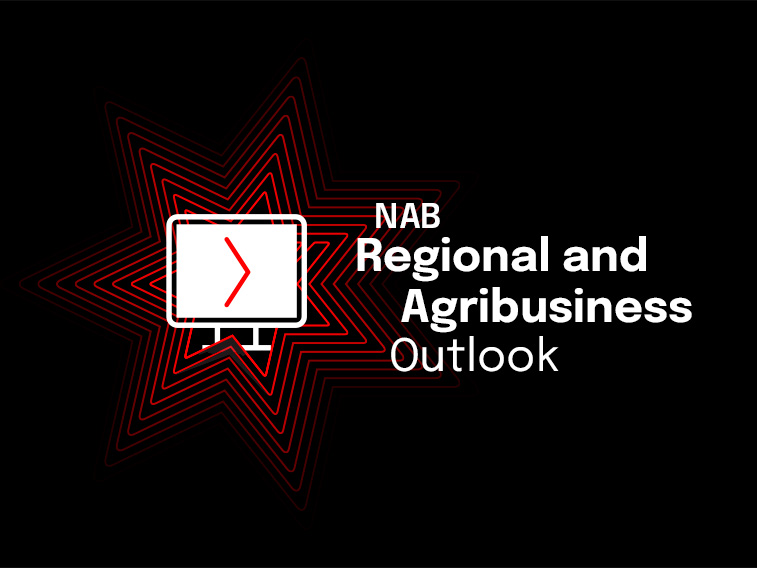The latest NAB Regional & Agribusiness webinar provides insights on the Australian & Global Economies, and a regional and rural property update. Watch the webinar here.

Webinar
Conditions slowly normalising but still high for now.

Our podcast series to accompany the NAB Monthly Business Survey continues, giving you a 10 minute summary of the key survey developments this month. Listen now.
If listening on a mobile device, click listen in browser.
Business conditions continued to ease in April but remained elevated, reflecting the enduring resilience of demand and a strong labour market. Trading conditions were lower but at +20 index points remain at a very high level, and the employment index has stabilised well above its historical average. Confidence, by contrast, is now mired below average (albeit it has also stabilised in recent months) suggesting firms expect the recent period of resilience to fade. Cost growth remained a challenge, with purchase cost growth picking back up after easing in recent months and labour cost growth still high. Nonetheless, price growth measures continued to gradually moderate with overall prices running at 1.1% in quarterly terms and retail prices at 1.4% (down from 1.7%). This may signal further gradual easing in inflation in the early part of Q2 after the most recent CPI release showed some easing in Q1, albeit inflation remains very elevated. We continue to expect consumption growth to slow as the effect of higher rates further impacts households, but how quickly and how sharply this occurs remains uncertain. For now, the survey suggests that the economy remains resilient.
Business conditions eased 2pts to +14 index points in April, continuing a trend of gradual easing but remaining at above-average levels. Trading conditions were down 4pts but are still very strong at +20 index points, while profitability also eased 2pts. Employment was broadly steady at +11 index points.
“Business conditions continued to edge lower but remain well above their long-run average,” said NAB Chief Economist Alan Oster. “Demand is still very strong, as demonstrated by elevated trading conditions, and employment is also holding up reflecting the strength of the labour market.”
“Across industries, conditions remain very strong across the board, particularly in transport & utilities and mining,” said Mr Oster. “Construction remains the softest which reflects the ongoing challenge of elevated input prices putting pressure on profits for businesses in the building sector.”
Business confidence rose 1pt to 0 index points. Wholesale led the increase (up 11pts), alongside small improvements in finance, business & property, retail and construction, though manufacturing fell 9pts. In trend terms, confidence was still negative in retail, wholesale, and finance, business & property, and turned negative in recreation & personal services, but was positive in other sectors.
“Confidence is still below average but has stabilised around 0 index points over recent months.” said Mr Oster. “A zero reading for confidence in the survey indicates that an equal share of firms are optimistic as pessimistic, which highlights how the outlook is finely balanced.”
Leading indicators softened, with forward orders down 2pts to +1 index points and capex also down 2pts to +6 index points. Capacity utilisation was steady at a relatively high 85.1%.
Price and cost growth were mixed. Labour cost growth was steady at 1.9% in quarterly equivalent terms, but purchase cost growth rose to 2.3% (from 1.9% in March). Still, overall price growth was 1.1% (down from 1.3%) and inflation in the retail sector was 1.4% (down from 1.7%).
“There was some further easing in price measures this month even though cost pressures remain very high,” said Mr Oster. “This may signal further gradual easing in inflation in the early part of Q2 after the most recent CPI release showed some easing in Q1, albeit inflation remains very elevated.”
“Overall, the survey shows the economy remains resilient,” said Mr Oster. “We continue to expect consumption growth to slow as the effect of higher rates further impacts households, but how quickly and how sharply this occurs remains uncertain.”
For more information, please see the NAB Monthly Business Survey (April 2023)
© National Australia Bank Limited. ABN 12 004 044 937 AFSL and Australian Credit Licence 230686.